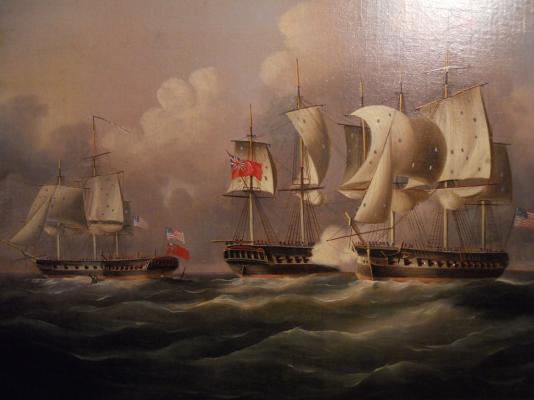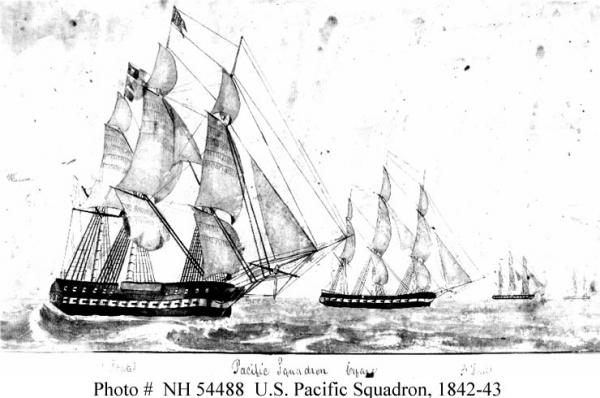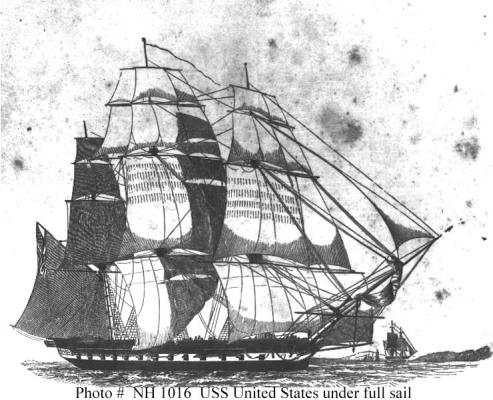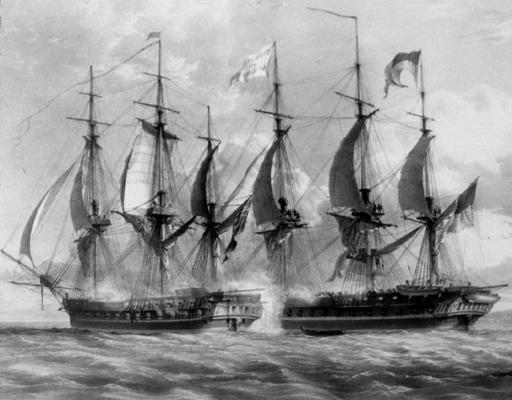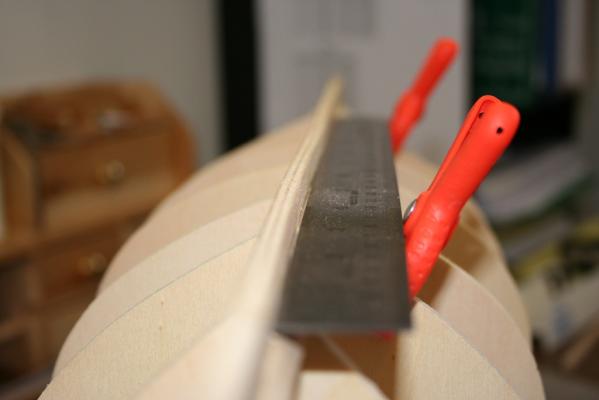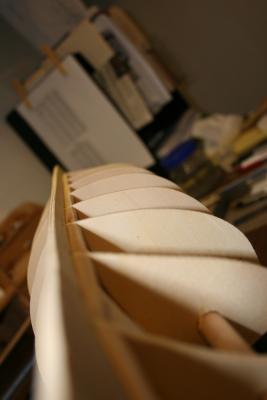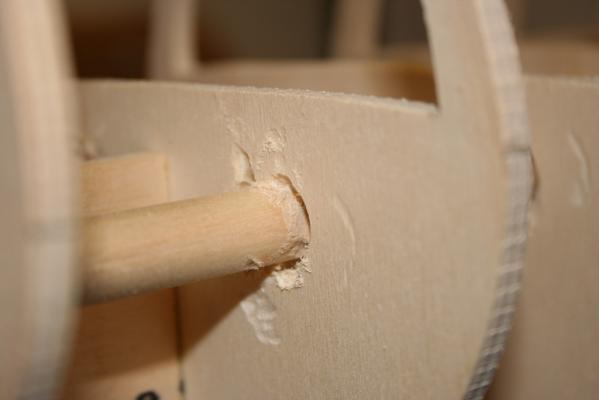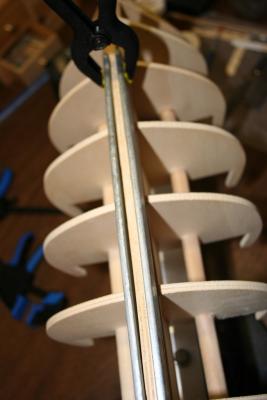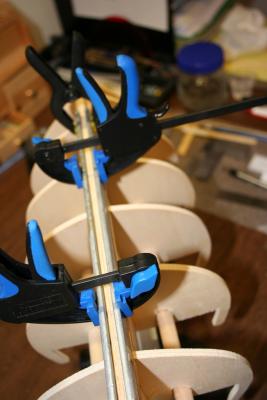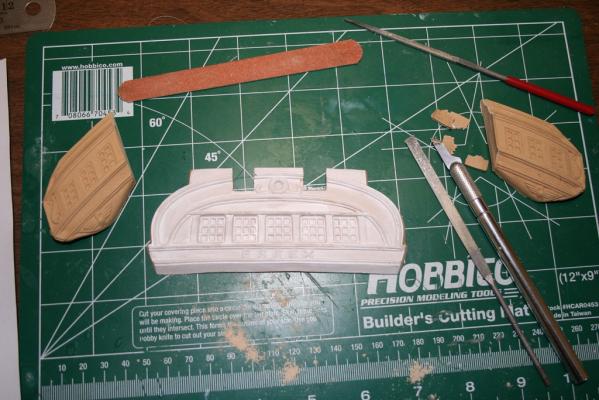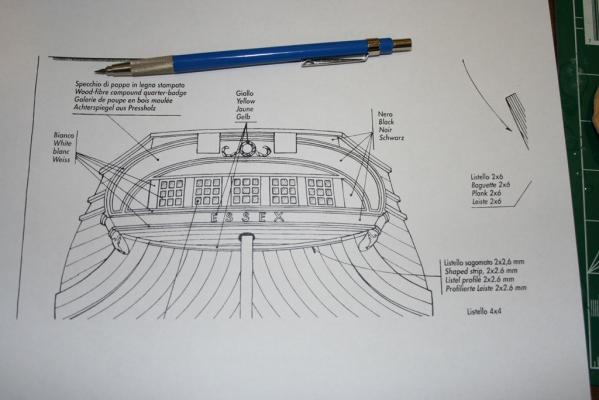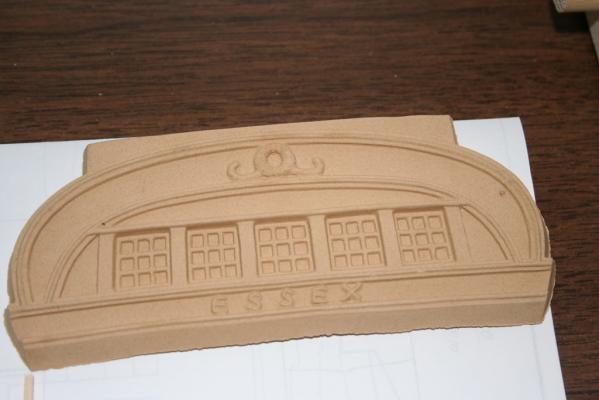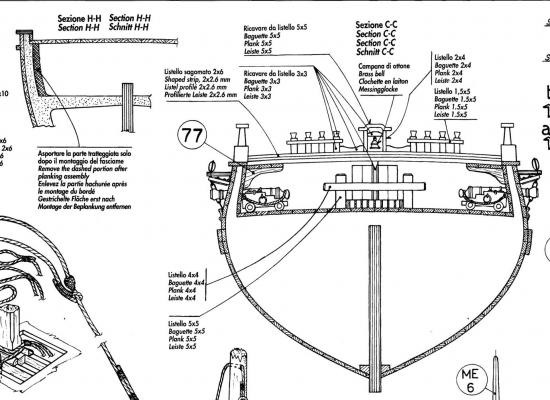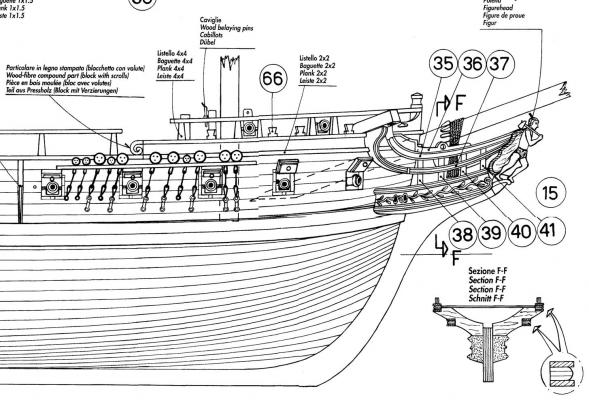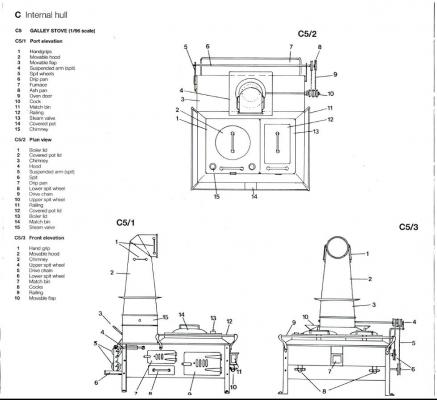-
Posts
3,156 -
Joined
-
Last visited
Content Type
Profiles
Forums
Gallery
Events
Everything posted by trippwj
-

Martingale, Dolphin stricker USS United States (44)
trippwj replied to historyguysteve's topic in Nautical/Naval History
Thought I had one more painting of the United States. This one, painted by Thomas Buttersworth, Jr c. 1813, shows the United States and HMS Macedonian battle. Note the single dolphin striker on the United States (right side of painting). It is on display at the Penobscot Marine Museum in Searsport, ME. -

Martingale, Dolphin stricker USS United States (44)
trippwj replied to historyguysteve's topic in Nautical/Naval History
As promised, here are 2 period engravings showing the United States with the single dolphin striker. The next is from a watercolor by Gunner William H. Myers, of USS Cyane, showing the Squadron's ships sailing in line abreast, 1842-43. Ships are (from left to right): USS United States, USS Cyane, USS Saint Louis, USS Yorktown and USS Shark. Copied from Journal of a Cruise on the USS Cyane, 1842-1843, by William H. Myers. Both pictures were found at the US Navy History and Heritage Command website at http://www.history.navy.mil/photos/sh-usn/usnsh-u/u-states.htm The image below is from the Chesapeake Mill website at http://www.chesapeakemill.co.uk/history.html Hope these help! -

Martingale, Dolphin stricker USS United States (44)
trippwj replied to historyguysteve's topic in Nautical/Naval History
Given the United States was built by Humphreys, and the his insistence (generally futile) that the frigates adhere to his design, I suspect the frigate when commissioned to be very close to his plans. The martingale/dolphin striker question may be clearer if you examine other period ships he built. The compromise was made to allow each builder and the Captain superintending construction (who was to be the first Captain) to determine the masting and sparring of the frigate. There was quite the debate prior to that decision among builders and captains. One other historical path to pursue is to look at other ships commanded by Barry prior to the US. I have somewhere an 1860's engraving from the Naval Heritage Center - let me see what that has! -
I shall refrain from commenting on giving Anja the boot - I have some decorum! Have you considered taking the bus? Nice work on the shrouds and rat lines, Sjors. Thanks for sharing these pictures to keep "you know who" happy!
- 1,873 replies
-
- occre
- san ildefonso
-
(and 1 more)
Tagged with:
-
Pulling up a seat to watch, Frank. Should be fun watching you bring her to life! There are 2 historical US Revenue cutters that this might be - one was built in 1818 - 58 foot keel, 19 foot beam schooner. Based in my neighborhood when she was in service. The second schooner is known but not a lot of details - according to the USCG, No record has been found concerning the origin of Alert. Her dimensions are close to those of the Doughty 1815 plans for a 79-ton vessel. She was first stationed at New York and then removed to Eastport, ME in early 1839. (She had been one of the cutters sent to Charleston, SC during the Nullification Controversy in 1832-1833). In 1852 an extravagant repair estimate (over $9,000) led to her sale in Boston, MA around April 1853. Based on the pivot gun, this is likely the 1818 Alert. There is some information in Chapelle's The History of American Sailing Ships concerning early revenue cutters. Have fun!
-
If the shrouds are to align the mast, the ones at the front are key to lateral (left/right) alignment and to limiting the rake of the mast aft.
- 1,873 replies
-
- occre
- san ildefonso
-
(and 1 more)
Tagged with:
-
Thanks for the tutorial, Tony, it is quite helpful to me. Oh - and good luck getting that loft ready for the sawdust manufactory!
- 1,279 replies
-
- agamemnon
- caldercraft
-
(and 1 more)
Tagged with:
-
I must agree with Popeye - very nice set of photos. The Fonz is looking sharp, and your Aggie, well, I've heard her described as being like planking a big barn. Nicely done! Now - more shrouds, more fiddly bits and then the part we have all been waiting for - rat lines!!!!!
- 1,873 replies
-
- occre
- san ildefonso
-
(and 1 more)
Tagged with:
-
Outstanding!!! Beautiful work, Frank. Congratulations!!!
- 389 replies
-
- supply
- caldercraft
-
(and 1 more)
Tagged with:
-
Well, it's tomorrow - no sawdust, not pictures. Pffff!
- 1,873 replies
-
- occre
- san ildefonso
-
(and 1 more)
Tagged with:
-
Good morning, Robin. I think it means that your library or institution would need an online subscription to the journal for you to be able to log in through them. I do not know which libraries/universities have that access - you would need to check with the ones you have access to and see if they can get it for you. You may be able to get a copy via Mr. Goodwin. I have tried to access it for download as a member of the SNR (publisher of the Mariners Mirror) but it is apparently not yet available for download. The only option is to pay $39 USD to download from the website above. I unfortunately do not have ready access to a flat surface scanner otherwise I would scan it for you.
-
Golly - she looks great, Augie. Grant - i know what he has up his sleeve - his arms!!! Ok, will leave now. Sorry for the interuption. Pfffff!
- 2,191 replies
-
- confederacy
- Model Shipways
-
(and 1 more)
Tagged with:
-
Well, I have certainly been remiss in updating this! Yes, the repairs were successful. You may recall that I had a problem with the bulkhead former being less than flat/straight. Based on the advice provided, I widened the holes that the supporting dowels passed through, as well as slightly thinning the dowels. It isn't particularly attractive, but will be planked over fully so not visible. Important thing is the repair worked. Next step was to clamp the keel thingy between two pieces of steel for about 3 days (arbitraty - had to go on a business trip so let it sit for the duration) After removing the clamps and metal, the former is nearly flat. While I haven't gotten a great deal done, have not been totally idle. In the above you can see the supports for the garboard plank have been installed and shaped. In addition, #1 son has started to work on preparing the stern and quarter galleys for painting and installation. While he is working on that, I have been pondering the planking of this beastie and planning the approach. It appears that the first plank will be about at the level of the deck and follow it toward the stern, with a slight rise in the bow. First plank piece has been bent to shape, now getting ready to cross check between sides and take the plunge of putting glue to wood. Until next time,
-
Not sure how much red was actually used for privateers and such - also some conflicting recent research on actual amount used on war ships. Goodwin (I think) studied several sets of carpenters invoices and logs for the Victory and found very little red paint or pigment - not nearly enough to do the full cockpit let alone the bulwarks. Looking at several lists of stores for the Colonial ships in the Revolutionary war, I have not come across any that had red pigment or paint included (see, for example, the lsit of materials for a frigate of 36 guns) Appendix B in Naval Documents of the American Revolution Volume 9 (1982). http://www.ibiblio.org/anrs/ndar.htmlhttp://www.ibiblio.org/anrs/ndar.html
-
Coming along very nicely, Augie - impressive work on the thinning. Now, what is this "Spring" of which you speak?????
- 2,191 replies
-
- confederacy
- Model Shipways
-
(and 1 more)
Tagged with:
-
While not directly related, you may want to take a look at the recent (August, 2013) report by Peter Goodwin in The Mariners Mirror - The Application and Scheme of Paintworks in British Men-of-War in the Late Eighteenth and Early Nineteenth Centuries (Volume 99:3, pages 287-300) The abstract: The question of the authenticity of the colour scheme for the preserved HMS Victory has been the subject of some debate. This article uses historical evidence and technical analysis of paint samples to draw conclusions about the external and internal appearance of HMS Victory and other ships of this time in both the British and French navies. An investigation of a carpenter's account book from 1805 has revealed some interesting evidence on the use of paint aboard ship. Finally the author makes recommendations for possible improvements in the paint scheme for HMS Victory that will be more historically accurate. The article can be purchased at http://www.tandfonline.com/toc/rmir20/99/3#.UyhlCc4-dbQ
-
Beautiful work, Bob. I have a couple of excerpts from AOTS of the stove. The patent for the stove is viewable here http://hmsfly.com/pdf/brodie_patent_transcription.pdf The few pictures (from British ships) show it installed on a brick base, however the description in TFEP describes the metal basin. There is also an article in the downloads section here http://modelshipworldforum.com/resources/furniture/stove.PDF Looking forward to your next update!
- 1,477 replies
-
- essex
- model shipways
-
(and 1 more)
Tagged with:
-
That is the same book, just the 1994 reprint. One thing to keep in mind is that rigging methods evolved fairly slowly - what was in use in 1720 would likely still be in use in nearly the same form for 1740. I am also looking through (as I get the time) my copy of The Fore-and-aft Rig in America: A Sketch by E. P. Morris (1927). While not specific to French practice, he uses a number of other nations to show evolutionary trends in the development of the rig in America. You might also find some information in Fore and Aft: The Story of the Fore & Aft Rig from the Earliest Times to the Present Day by Edward Keble Chatterton (1912). I haven't looked through it yet to see if there is useful info (actually, it just occurred to me as I was typing this missive).
-
the good news it you saw the issue before you glued it in and moved on! You can overcome this, I am sure, with patience and some Oude jenever you can conjure up the proper solution! Those cannon are impressive, but that sounds like a lot of rigging work!!!
- 1,616 replies
-
- caldercraft
- agamemnon
-
(and 1 more)
Tagged with:
-
One resource you may want to consider is R.C. Anderson The Rigging of Ships: In the Days of the Spritsail Topmast, 1600-1720 (original publication in 1927, Dover reprint in 2012 - ISBN 9780486279602). He is arguably one of the more authoritative sources on rigging practice - English, French and Dutch in particular - from that era. Make sure you get the one listed above - he also has another version that updated it but focused only on the English methods of rigging.
-
And so, as the sun slowly settles in the west, we bid adieu to our daring pin rail innovator and wonder, what the heck has his devious mind conjured up? Will he make his thingy in 2 halves? Will he make it out of pine or ebony? What does cast brass really look like on the mast? Will the fair maiden escape the rail road tracks? And who DID put the bop in the bop sh-bop sh-bop? Tune in tomorrow for the exciting continuation! Now, then, with that out of the way - look forward to seeing how you tackle this wee conundrum, Grant! Good Luck!
About us
Modelshipworld - Advancing Ship Modeling through Research
SSL Secured
Your security is important for us so this Website is SSL-Secured
NRG Mailing Address
Nautical Research Guild
237 South Lincoln Street
Westmont IL, 60559-1917
Model Ship World ® and the MSW logo are Registered Trademarks, and belong to the Nautical Research Guild (United States Patent and Trademark Office: No. 6,929,264 & No. 6,929,274, registered Dec. 20, 2022)
Helpful Links
About the NRG
If you enjoy building ship models that are historically accurate as well as beautiful, then The Nautical Research Guild (NRG) is just right for you.
The Guild is a non-profit educational organization whose mission is to “Advance Ship Modeling Through Research”. We provide support to our members in their efforts to raise the quality of their model ships.
The Nautical Research Guild has published our world-renowned quarterly magazine, The Nautical Research Journal, since 1955. The pages of the Journal are full of articles by accomplished ship modelers who show you how they create those exquisite details on their models, and by maritime historians who show you the correct details to build. The Journal is available in both print and digital editions. Go to the NRG web site (www.thenrg.org) to download a complimentary digital copy of the Journal. The NRG also publishes plan sets, books and compilations of back issues of the Journal and the former Ships in Scale and Model Ship Builder magazines.


